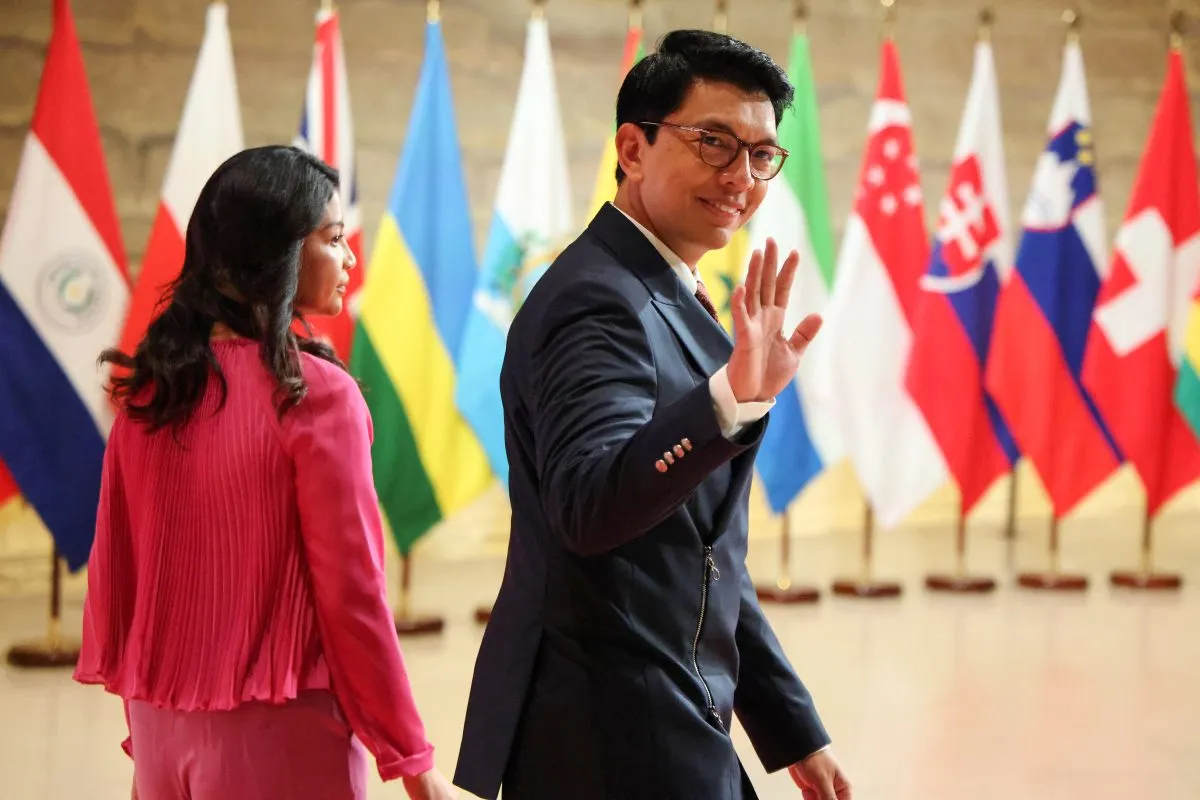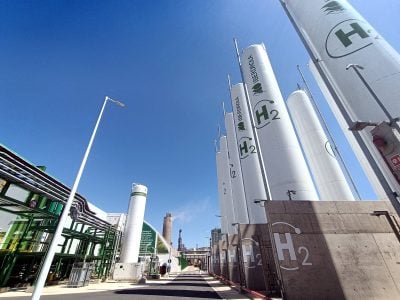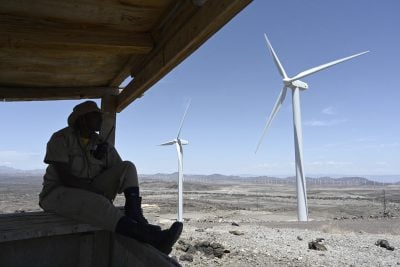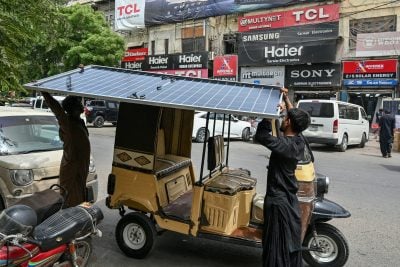Madagascar is among Africa’s richest countries in terms of renewable energy potential. Many of the island’s regions have more than 2800 hours of annual sunshine, which are some of the highest levels on the continent. The north and south of Madagascar have wind speeds that are highly favourable to the production of electricity. Its hydropower potential is estimated to be a sizeable 7800 MW. High levels of sugar production and other foodstuff suggest that biofuel could be another rich source of energy for Madagascar and its people.
Despite this, Madagascar has traditionally struggled to produce sufficient amounts of electricity. In 2023, the World Bank estimated that only 33.7% of the Malagasy population has access to electricity, compared to a significantly higher Sub-Saharan average of 48.4%. Almost 20 million people are believed to lack electricity access, meaning Madagascar is thirteenth in the list of countries with the largest unelectrified population worldwide.
This shortage has forced Madagascar to continue importing sizeable amounts of fossil fuels from foreign markets. While around 80% of Madagascar’s energy now comes from biomass, the remainder largely comes from fossil fuels such as petrol and coal. In 2022, Madagascar imported over $600m in refined petroleum, mainly from Oman and the United Arab Emirates.
In addition to the environmental implications, this has left the Malagasy economy unnecessarily exposed to high commodity prices – such as in the aftermath of Russia’s invasion of Ukraine, which saw crude oil prices surpass $130 per barrel. Elevated fuel prices were partly responsible for an environment of higher inflation in Madagascar, with prices rising at an average rate of 9.9% last year.
Given all of this, it is little surprise that President Andry Rajoelina (pictured) and the Malagasy government have identified renewable energy as the answer to several major challenges the country is facing. Ramping up renewable energy production could, at least in theory, play a major role in improving Madagascar’s electricity penetration and making the country self-sufficient in energy, something which would in turn unleash further economic benefits.
Ugo Razafindratandra, corporate relations officer at the Economic Development Board of Madagascar (EDBM), tells African Business that Madagascar’s climate makes renewable energy an obvious solution for a country in need of more power production. “We think renewables are key to making a positive impact in terms of sustainable development,” he says. “All the resources are free. We have high levels of annual sunshine. We are an island, so we have a lot of water for water-based energy solutions. We have good wind speeds in several regions of Madagascar.”
For this reason, the government has already set out bold ambitions in this sector under the Madagascar Rural Electrification Programme, which aims to leverage the potential of renewables to bring electricity to 70% of the rural population by 2030. Razafindratandra adds that the authorities also see renewables as a way to drive industrialisation and boost the Malagasy economy.
“Energy is a priority sector as one of the pillars of the government’s programme is the industrialisation and economic transformation of the country,” he notes. “Looking longer-term, we want to set up free zones for businesses to attract foreign direct investment (FDI), but that will require a lot of energy, and renewables is the key to achieving this.”
Global organisations and Madagascar’s international partners appear to have bought into this vision and have provided considerable assistance to help the country develop its renewable energy sector. For example, in November 2020, Power Africa, a US government initiative, awarded $1.2m in grains to mini-grid developers in Madagascar in order to deliver sustainable energy solutions for rural communities, individuals, and businesses.
In February this year, the European Union also announced a new initiative known as “RePower” to bring renewable energy to 20,000 off-grid consumers in Africa by 2027. The EU is providing around $10.7m in funding to enhance the penetration of renewable energy in rural communities across Madagascar, Niger, Senegal, and Ghana.
Private sector gets involved
While such humanitarian initiatives play an important role in boosting Madagascar’s renewable energy sector, the involvement of the private sector is critical. After all, while the state electricity company JIRAMA does provide electricity to some parts of the country, the majority of Madagascar’s energy comes from private enterprises.
In the past, the private sector has been reluctant to boost their production capacities in Madagascar. Low population densities in many areas, as well as high levels of poverty, has made it commercially unviable for the private sector to deliver services in large swathes of Madagascar. However, the Malagasy government has recognised this and, with the assistance of international bodies, is now offering public sector funding and other incentives that are making Madagascar’s renewable energy sector increasingly attractive for the private sector.
In April last year, the World Bank approved a $400m credit for the Digital and Energy Connectivity for Inclusion in Madagascar Project (DECIM) that has the target of doubling energy access in Madagascar up to 67%. The DECIM project will subsidise the provision of energy-related infrastructure to ensure that private companies can provide electricity in areas that would otherwise be commercially unviable.
DECIM also aims to close the “affordability gap” by ensuring that communities have enough cash to pay for their electrical needs. By addressing issues on both the supply side and the demand side, the Malagasy government hopes to pave the way for greater private sector investment in the country’s renewables sector and therefore greater access to electricity across the island.
When the World Bank’s credit facility was announced, President Rajoelina said that “access to energy and telecommunications are top priorities for our government. This project is fully aligned with our vision for the development of Madagascar. It will allow a significant increase in our access to energy and digital services.”
Marie-Chantal Uwanyiligira, the World Bank’s country manager for Madagascar, added that “this is a project that stands at the forefront of our objective to deliver energy and digital services to all, well beyond the grid and urban settings. DECIM will provide comprehensive support to make this possible, financing isolated and remote areas’ infrastructure developments in partnership with the International Finance Corporation (IFC).”
“This support will be transformational for small business as well as for the individual households and citizens and will put Madagascar on the path to double its electricity access,” she said.
Projects such as DECIM remain in a relatively early stage but there are encouraging signs that the private sector is responding positively to these incentives and public sector support – and sensing opportunities in the Malagasy market. Razafindratandra points out that organisations such as his, the EDBM, are playing a role in closing the gap between the government and private businesses and driving increased investment in critical sectors such as renewables.
“The EDBM has an important role as we are the “bridge” between the private and public sector,” he tells African Business. “We are working closely with the ministries in charge of promoting renewables, mainly the ministry of industrialisation and the ministry of trade. We are also working closely with the president’s office because they are in charge of promoting public private partnerships (PPPs) with global energy companies.”
Hydroelectric and solar lead the way
Perhaps the most prominent example of this enhanced cooperation between the public and private sector is the Sahofika Hydroelectric Power Station, which is currently under construction but is due to commence operations later this year. The project is a PPP between the Malagasy government and a consortium of international energy companies. The government has contributed €30m to the project, with the African Development Bank, the Arab Bank for Economic Development in Africa, and the EU also poised to support the project financially.
When the power station is completed and comes online this year, it will supply power to around eight million people in Madagascar – a testament to the social and economic change cooperation between Madagascar’s public and private sectors can bring.
Other private sector energy companies have also expanded their footprint in Madagascar as a result of the market becoming more attractive and commercially viable. In February, the pan-African company AXIAN agreed a deal to acquire solar power assets in Madagascar. These assets include the Ambatolampy solar power plant as well as four hybrid power plants, which will collectively bolster access to electricity for around 600,000 people in Madagascar.
In May, the global mining company Rio Tinto announced that it had commissioned the first stage of construction for a new renewable energy plant in Madagascar. The project will start with an 8MW solar plant and will eventually include wind power and battery storage facilities as well.
In the same month, President Rajoelina officially opened the Ehoala solar power plant, a collaboration between the government, the state-owned JIRAMA, and the private enterprise QMM. The plant will help ensure that the citizens of Toalagnaro have access to stable and sustainably-sourced electricity.
The Malagasy government is confident that these initiatives will help further its mission to promote broad social and economic change on the island. The entry of private enterprises into Madagascar’s renewable energy sector is likely to ensure the country manages to expand its energy coverage and bring down electricity prices, boosting citizens’ standards of living and businesses’ competitiveness. Given that many foreign companies currently cite lack of access to electricity as a major barrier to investing in Madagascar, improving electricity penetration could also help attract greater amounts of foreign investment.
It is for these reasons that the Malagasy government is investing considerable resources into developing this promising industry. Indeed, Olivier Jean-Baptiste, minister of energy and hydrocarbons, recently emphasised the extent of Madagascar’s ambitions in this industry. “We are unwavering in our commitment to continue working tirelessly to increase the national energy coverage,” he said, “offering the hope of a better way of life for many Malagasy people.”
Want to continue reading? Subscribe today.
You've read all your free articles for this month! Subscribe now to enjoy full access to our content.
Digital Monthly
£8.00 / month
Receive full unlimited access to our articles, opinions, podcasts and more.
Digital Yearly
£70.00 / year
Our best value offer - save £26 and gain access to all of our digital content for an entire year!

 Sign in with Google
Sign in with Google 



